Technology Observatory from 30th of June to 3rd of July
This week in the NEO Blog Technology Observatory:
● Apple publishes iOS 7.1.2 with fixes and improvements in iBeacons
● Apple releases OS X 10.9.4
● Six curiosities about Android L that you might not know about
● Google Glass banned at U.K. movie theaters
● Windows 9 will know where you're running it and adapt to your needs
● Android makes the leap to 64-bit with Android L
● The lowdown on Samsung Galaxy S5 mini
● European Commission gives green light to Vodafone's purchase of ONO
● Samsung to discontinue plasma TV production from next year
● Huawei sells 500,000 phones through the messaging app WeChat
● Gowex, the Spanish 'miracle' that that never was
Today, just two months after releasing the update for iOS 7.1.1, Apple decided to publish the update for iOS 7.1.2, with fixes for bugs found in previous versions and improved iBeacon compatibility. The latest version is what you might call a minor update. Occupying just over 30 MB (depending on your iOS device), the 7.1.2 version fixes security bugs related to mail attachments and provides greater stability for iBeacon connections. Additionally, the update corrects a few tiny bugs identified and resolves the problem of data transfer with third-party hardware. The update is already available for all devices via the iOS system settings and can also be downloaded from iTunes. As practically the complete system, the latter version takes up 1.4 GB.
iOS 7.1.2 wasn't the only update we encountered this week. Apple also rolled out OS X Mavericks 10.9.4, which includes improvements to certain aspects of the system as well as Safari 7.0.5. Among the novelties are solutions to an issue that "prevented some Macs from automatically connecting to known Wi-Fi networks" and the improved reliability of wake from sleep. As always, to download this application completely free of charge all you have to do is go the updates section of the Mac App Store (or the Software Update section in the Apple menu in the bar across the top of OS X) and wait for the installation to load. It depends on the Mac, but the download weighs around 93 MB.
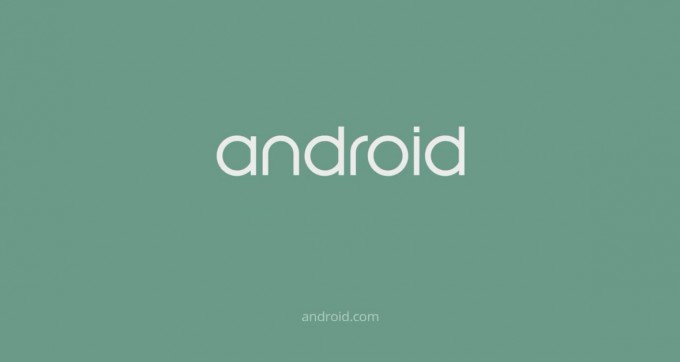
Android L has a few secrets and tips that weren't revealed at the conference but which we can now examine at our leisure. Here's a list of some of the details that were probably overlooked when Android L was unveiled and tested.
Color schemes on the keyboard
Do you want your keyboard to work with Material Design or do you prefer to stick with the way it's always worked and not change anything in that respect? No worries, because the advanced keyboard settings let you choose whichever scheme you want.
Order of elements on the keyboard
Still on the subject of the keyboard, there are two things to note about the order of the icons: one, the input style icon is now on the navigation bar instead of appearing as a persistent notification; and two, the voice dictation key is now next to the predictive typing suggestions.
Search inside settings
Problems finding options in the list? Well rest easy because Settings now includes a search icon, making it much easier and faster to locate options.
New battery interface
The battery interface is also much improved. Not only are the recharge options more accessible but you can also view data like the estimated battery duration depending on your use. Oh, and you can also view more information about how much battery your apps consume.
Greater control over your Wi-Fi passwords
Before Android L you could choose whether you wanted to save your Wi-Fi network passwords with your Google account, something which turned out to be quite controversial as a lot of people were unhappy about such information being stored on Google's servers. Now this option has been moved to the initial settings, giving users more control over their privacy.
Boot animation
Up to now, Google animations were relatively simple but good to look at. Now, however, it seems Android L has changed this feature as well because the boot animation consists of four dots in Nexus colors that spin around the screen until the system is ready and then turn into the new Android logo.
But all of this is to be continued...
There are probably still tons of hidden secrets in Android L waiting to be discovered.
It's just one week since the long-awaited Google Glass went on sale in the United Kingdom, but it's already coming up against obstacles. According to a report in the British daily The Independent, the augmented reality eyewear will be banned at most of the country's movie theaters. The near-unanimous decision comes after the ban was approved by the Cinema Exhibitors' Association, which controls 90% of U.K. movie theaters. The decision makes a lot of sense for some, but not so much for others who argue that in the hypothetical case of someone trying to record a movie in the theater auditorium they would encounter battery issues, plus the fact that it would be quite difficult to disguise the intent to record because of the Google Glass built-in lights, which would give the game away. Even so, despite it being quite tricky to actually record a movie, it is still illegal and might distract other viewers in the theater. The Cinema Exhibitors' Association is not the only body to have introduced a ban of this type - many businesses and establishments prohibited the use of Google Glass when it was announced in the United States.
We've known since the beginning of 2014 that Microsoft was already working on what was to be the next great update of its famous Windows operating system, until now known by the code name "Threshold". In principle, Windows Threshold was expected to be just another Windows 8 update due to be released in the fall or by the end of the year, but this week we heard that what they are working on is a new operating system with new features and which according to ZDNet will probably be called Windows 9.
Sights set on Windows 7 users
Everyone knows that Windows 8 has proved to be quite an abrupt change of mentality for users coming from Windows 7 and even earlier versions. The new Modern UI or Metro interface, as it was initially called, gave rise to various inconveniencies and complaints about it being too complicated, and as word spread a lot of people decided to stick with Windows 7 or do a downgrade. Windows Threshold seems to be targeting users who didn't migrate to Windows 8 and are still using Windows mainly on desktop computers and devices without a touch screen, users who are looking for simple interaction rather than something sophisticated focused on tactile interaction, which explains the much-voiced delete problem and the promised return to the famous "Start button". It seems this preview won't be ready for Update 2 of Windows 8.1 but will be available in Threshold, which will also offer the option of the same button but in a mini version, configurable to show shortcuts to both desktop and Modern UI apps, and which you'll be able to disable if you want to.
Back to the traditional desktop
Steven Sinofsky, former president of Windows and Windows Live at Microsoft, said that Windows 8 would be the first hybrid operating system for use in traditional computers, touch screens and even tablets. In spite of that promise, Threshold would be able to resolve concerns from Windows 7 users, as it would know where it was booting up and how to do it based on the system information. For instance, if it were installed in a desktop computer the PC would boot with the traditional desktop, but if the PC had a touch screen or if the OS were installed in a tablet, Threshold would boot with the Modern UI interface. And of course, you should be able to configure all of this according to your needs. Another interesting aspect is that Windows Threshold will probably come with a new interface, a facelift for both desktops, with a new system for the now classic windows, and for the Modern UI tiles, which confirms that we're clearly talking about a new operating system and not simply a Windows 8 update, as was originally thought.
Version for developers in the fall
The version for developers is likely to be released in the fall, a few weeks after the rollout of Windows 8.1 Update 2 scheduled for next September, which means that the Windows Threshold or Windows 9 version should be available for the public by April 2015. However, there is still no launch date for the open beta version so that we can all try it out, like we did with Windows 8. The idea is that the entire base of users still with Windows 7 will migrate to the new Windows Threshold, which is expected to offer an interface focus based on desktop and windows, something that users want and hope will make a comeback.
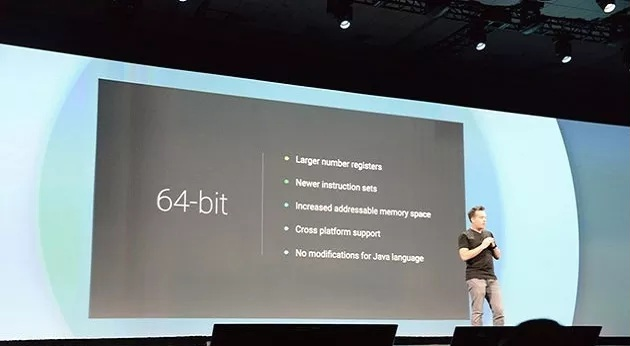
Android L comes with both a radically different interface and internal changes as well. Internal changes? Yes, now we'll have support for 64-bit architectures instead of the current 32-bit. To date, the only operating system that has dared to make the leap to this processing architecture has been Apple, with its iPhone 5S, which it has to be said, runs very smoothly. They really did a good job there. Google clearly wants to follow suit and has not only completely revamped the interface but has decided to do the same as its direct rival and adapt its own mobile operating system to 64-bit. The cards for this improvement have been on the table for a long time as there is no doubt that it significantly enhances the fluidity and speed of devices.
32-bit and 64-bit: What's that?
For those of you who don't know this, having a 64-bit operating system and being able to run it thanks to a processor that supports the same architecture significantly improves the fluidity and speed of the operating system in your device. To give you an idea (this is the way I understand it), imagine that instead of cars driving along just one highway they had two to drive along. That would be passing from 32-bit to 64-bit. Naturally, that doesn't mean you get double the speed because in terms of operating system design that would be too complicated, but what you do get is considerable room for improvement.
Some manufacturers already support this leap
Chip manufacturers like Qualcomm, Mediatek, Intel and others have already created chips with the possibility to support 64-bit software, but without an operating system based on this architecture there was very little else they could do. Now it seems that those SoCs are going to stop collecting dust and will finally come into their own in the new Android version, which at long last is going to support 64-bit architecture.
What are the improvements?
As far as the internal workings of the device and software go, there are obvious improvements. The operating system will have more pointers to point (forgive the repetition) at areas of memory. This means that more RAM memory will be used but it will be used more effectively, improving the performance of the device. It will also be capable of handling greater-capacity RAM memories. In other words, the fluidity and speed is likely to increase by between 30 to 60%. This might cause a headache for some developers because they'll practically have to redesign their applications to adapt them to the 64-bit architecture now available. Even so, apps based on 32-bit architectures will still be able to run fine in a 64-bit operating system, the only difference being that they won't be able to make full use of the resources offered.
Android L x64-bit, sounds good
In my opinion, the fact that Google has decided to radically alter its operating system for mobile devices, with new functions, manufacturer options not included by default and now 64-bit architecture, is really a way of banging on the table and putting on a brave face in front of its competitors. It remains to be seen whether future versions, apart from the Developer Preview which is already available for developers, will come with the same 64-bit processer included in Android L. The aforementioned preview version seems to be reasonably fluid, but we'll reserve final judgment until the general release. I for one can't wait!
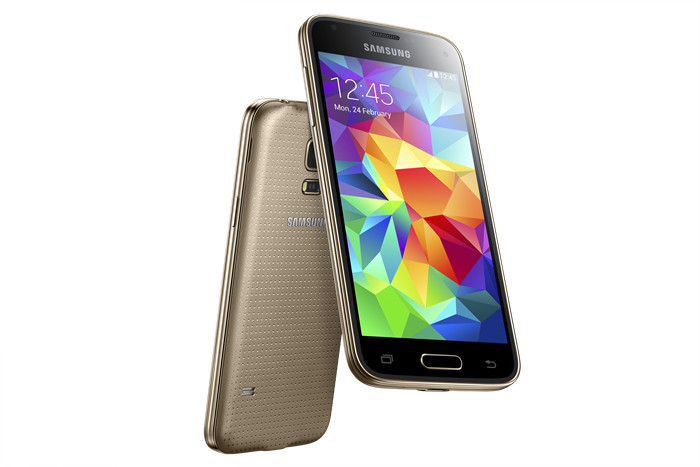
Suddenly, with no warning - though there has been the odd sighting - and hot on the heels of the barrage of entry-level smartphones unveiled yesterday, Samsung has finally taken the wraps of its Galaxy S5 mini. An increasingly fictitious 'mini' that comes with another tiny screen size increase, consolidating the 4.5-inch format, with fewer specifications and a nod at all the other brands except for Sony. Let's take a closer look at it.
Galaxy S5 mini, small on the inside
This is a mini version that's more than half a centimeter longer in length, now measuring 131.1 x 64.8 millimeters, is 9.1 mm thick, so not particularly slim, and weighs in at a not-so-special 120 grams. The screen has grown from 4.3 to 4.5 inches, while the resolution has increased from qHD (960x540) to HD (1.280 x 720), also Super Amoled, at 326 pixels per inch. That's not bad, but it's nowhere near the latest smartphones in this aspect. Inside it has a 1.4 GHz Quad Core processor, which could easily be a Snapdragon 400, accompanied by 1.5 GB of RAM and this time, thankfully, an internal memory starting at 16 GB expandable to up to 64 GB via micro SD. It will also come with the latest Android version available - 4.4 KitKat - with no news yet about Android L. It has two cameras, Samsung's usual 2-megapixel front-facing one, and a main one that has risen from 16 million dots to 8 megapixels, with a video recording capacity in full HD of up to 30 frames per second. This Galaxy S5 mini comes with excellent LTE download/upload speeds of 150/50 Mbps, an NFC chip, Wi-Fi at the penultimate standard of 802.11n, Bluetooth 4.0 (Low Energy) and a micro USB 2.0 adapter. It also has infrared control for use as a remote control with multimedia equipment, as well as Glonass. The battery will be 2,100 mAh and there will also be a model with a DUAL SIM but no LTE connectivity, though the other details have yet to be released. As for the outside, it will be just as waterproof as the smartphone from which it takes its name, the original Galaxy S5. It has IP67 certification for water and dust, which means total protection from dust and the effect of immersion in up to 1 meter of water for 30 minutes. And it has the same two biometric sensors as its big brother. The S5 mini has both a fingerprint scanner and heart-rate monitor, located in exactly the same position. The former is under the home key, which you slide to unlock the terminal. Samsung also says it will be compatible with the brand's main wearables, such as the Gear Fit, Gear 2 and Gear 2 Neo.
Galaxy S5 mini, availability and price
The S5 mini will reach stores in the same four colors as the original Galaxy S5: gold, white, black and blue. However, there are still no details about the price or when this new mid-range device will actually hit the main street - except, that is, for Russia, where it's due to arrive at the beginning of this month.
In March of this year Vodafone announced the acquisition of ONO following weeks of rumors. As is usually the case with these types of operations, the deal couldn't be finalized until the various regulatory authorities had approved it. Well, today Vodafone got the green light from the European Commission for its purchase of ONO, so the operation can now proceed as normal. What exactly does this mean? As confirmed by Vodafone, now that the approval has come through the operation should be completed within the space of two or three weeks. To be more precise, the carrier puts completion at the end of this month. What does it mean for existing customers? For the moment, it will be business as usual as they'll continue to enjoy the services contracted and will keep the same lines of support and information. However, although Vodafone has said that "no big changes are expected in the short term", it will be working to "design a common commercial offer" and make it available "as soon as possible". So, to sum up, we'll soon see a combined and convergent offer with services from both companies, Vodafone's 4G for mobile devices and ONO's fiber network for fixed services. Although Vodafone insists that things will remain as they are, for now, certain questions about the acquisition inevitably spring to mind. For example, Vodafone's deployment of fiber, which will continue for the moment in areas where ONO has no coverage. And that's sure to upset Orange given that the two carriers signed an agreement some time ago to share fiber. Also, when will Vodafone swap coverage for ONO mobile customers, who for now will stay with Movistar? Answers to these and other unknown quantities have yet to emerge, although no doubt we'll hear something in the coming weeks when the acquisition is officially finalized. Watch this space.
If you didn't know that the days of plasma technology were numbered, now is the time to find out more. A few months ago Panasonic took us all by surprise when it announced that it was discontinuing these TVs, and now Samsung has said exactly the same thing. The Korean giant has revealed that it will stop making PDPs or plasma display panels at the end of this year due to the diminished demand for products with this technology and the reduced income. These devices have never really caught on with the public and now, following the advent of 4K technology, people are more interested in buying LCD panels. Such being the case, Samsung will discontinue its plasma TVs as from November 30 and will adapt its factories to produce batteries and other products. This means that LG will soon be the only remaining major plasma panel manufacturer. Not only that: this could be the perfect time to buy a great television. If not, you'd better hang on for a few more years until 4K technology has advanced, the price has dropped and the quality has improved.
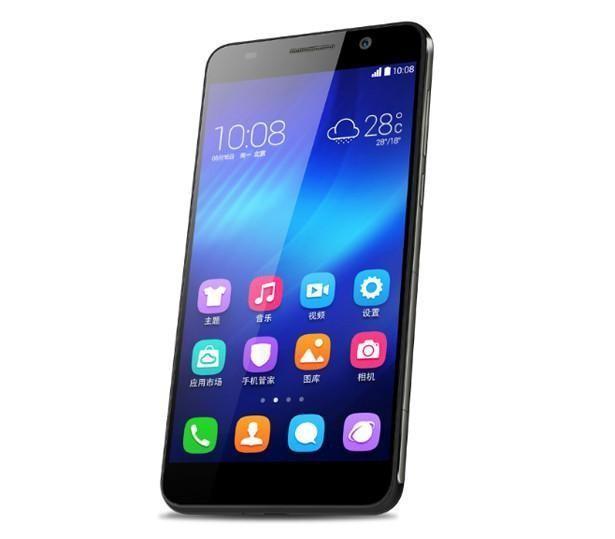
A week ago Huawei released a new terminal in China and decided that its main sales channel was going to be the WeChat app. We're talking about the Huawei Honor 6, and the app in question is a major messaging service in the Asian country, belonging to the Tencent group. The result: more than 500,000 phones sold ahead of the "conventional" release. There's nothing unusual about using these types of platforms as an advertising channel, or even as a service for users, but using them as a sales channel is really exploring uncharted territory. Every market has one or two well-established messaging apps, which reach practically every user in the market, so they are clearly an ideal showcase if you're looking to use them as a sales service. The number of users has grown exponentially in recent years, with people possibly using messaging apps more than any other app over the course of the day. If you combine this with special offers, or releases ahead of time, the idea becomes even more attractive. As regards the specific case of WeChat, this is a service with 400 million active users a month. Huawei has tested the water with this app first, and it certainly looks promising enough to take the whole thing further. There have been attempts in the past by the guys at Xiaomi and WeChat, with identical results, and if it's the American market you're looking at we've already seen Amazon's efforts to create a phone with easy purchase mechanisms. If you're wondering about how the purchasing element works, last year Tencent added payment options to the app, clearly with the intention of selling more than accessories or multimedia content.
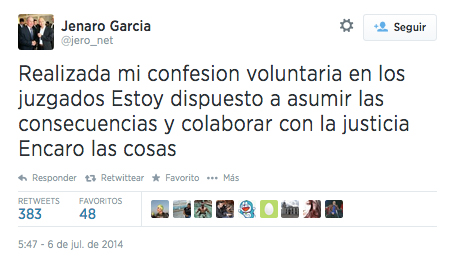
Until last week Gowex was one of the most exemplary companies in the Spanish market: a cutting-edge small-to-medium enterprise specializing in technology, and the growing Wi-Fi business in particular, built from scratch and spearheaded by Jenaro García, a successful entrepreneur who started out selling cars when we was just 19. The firm has grown exponentially over the years - its technology is already deployed in more than 80 cities and its target was 300 cities connected to its Wi-Fi proposal by 2020 - and it had become a benchmark for companies listed on the MAB, Spain's Alternative Stock Market. Now it turns out that the Gowex 'miracle' never was, as revealed in a report from the auditing firm Gotham City Research a few days ago, which left the entire industry reeling from shock at the news that 90% of the company's business was fake, that its turnover was barely 10 million euros rather than the 180 million reported in 2013, and that the value of its shares was zero and not the 1.4 billion reflected on the stock market. Although the company executives initially denied the report, they finally confirmed that it was true, causing a financial earthquake at the company with tremors spreading to the MAB as well. On Saturday Jenaro García admitted to the company's board and the MAB, and again today in court, that he himself had forged the Gowex accounts in recent years (coinciding with when it went public). García, who submitted his resignation as the company CEO yesterday - which was naturally accepted by the Gowex board - revealed the facts on Twitter today and said he'd already been to court to confess his actions: "I made the deposition and confession voluntarily. I'm willing to face the consequences and collaborate with the law. I face up to things," said his account on the social media site, to which he subsequently added the following tweet: "I apologize to all. I am heartily sorry." So now what? What will happen to Gowex now that its chief executive has admitted that the earnings were false, with the consequences this will have for shareholders and customers, etc. For the moment, the MAB has suspended the company's shares and notified the CNMV (National Securities Market Commission) of the firm's current situation. Needless to say, the company now faces a veritable financial debacle because the Gowex board has also filed for bankruptcy at the very real prospect of the firm not being able to honor its debts of nearly 30 million euros. It remains to be seen what will happen with the latest customers who subscribed to the company's services, like Metro de Madrid which recently announced Wi-Fi on the underground system courtesy of this provider.
In any case, we'll have to wait until PwC, commissioned to investigate the company, files its report with details about the real financial shenanigans at Gowex.
